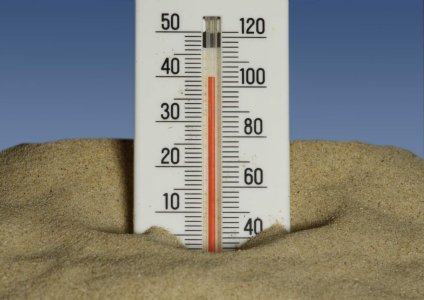A powerful new heat dome is sweeping in—how hot could your area get?
- Replies 0
If you’ve stepped outside in Texas lately and felt like you were walking into a giant oven, you’re not imagining things.
Some Texas cities are now experiencing heat index levels that rival—or even surpass—those in the Sahara Desert.
As a powerful “heat dome” presses down on the Lone Star State, Texans are facing extreme temperatures, broken records, and urgent health warnings.
A heat dome is a high-pressure system that traps hot air beneath it—like placing a lid on a pot. This week, that lid is firmly sealed over Texas, creating an intense heat wave more typical of July than
The result? Humidity rises, temperatures soar, and relief is nowhere in sight. It’s not just uncomfortable—it’s dangerous.

The heat index across central and southern Texas has hit between 105°F and 108°F—surpassing temperatures in several Moroccan cities near the edge of the Sahara Desert, where forecasts have hovered in the 80s and 90s.
On Wednesday alone:
The biggest concern? People’s bodies simply aren’t acclimated this early in the year.
That makes heat-related illness more likely, especially for older adults, children, and those with chronic health conditions.
While it's difficult to blame any single weather event solely on climate change, scientists agree that global warming is intensifying heat waves. The 10 hottest years since 1850 have all occurred in the last decade.
The past two years? Record-breaking.
As the planet warms, heat domes are becoming more common—and more severe.
The National Weather Service expects the heat to persist through the weekend and potentially into next week. With heat indexes pushing 110°F, there’s no quick cooldown in sight.
This heat dome is more than a nuisance—it’s a reminder of how rapidly our climate is changing, and how we need to adapt together.
More like this:

Have you lived through a heat wave like this before? How are you staying cool? Share your tips, stories, or concerns in the comments below. Your insight could help someone else get through the next sweltering day.
Some Texas cities are now experiencing heat index levels that rival—or even surpass—those in the Sahara Desert.
As a powerful “heat dome” presses down on the Lone Star State, Texans are facing extreme temperatures, broken records, and urgent health warnings.
A heat dome is a high-pressure system that traps hot air beneath it—like placing a lid on a pot. This week, that lid is firmly sealed over Texas, creating an intense heat wave more typical of July than
The result? Humidity rises, temperatures soar, and relief is nowhere in sight. It’s not just uncomfortable—it’s dangerous.

Some Texas cities are now experiencing heat index levels that rival. Image Source: Immo Wegmann / Unsplash
The heat index across central and southern Texas has hit between 105°F and 108°F—surpassing temperatures in several Moroccan cities near the edge of the Sahara Desert, where forecasts have hovered in the 80s and 90s.
On Wednesday alone:
- Austin reached 100°F, breaking its May 14 record set in 2003.
- San Antonio hit 102°F, smashing the 2022 record of 97°F.
- Del Rio surged to a blistering 104°F.
Why now? And why so early?
The National Weather Service warns that this kind of heat is extremely rare for May.The biggest concern? People’s bodies simply aren’t acclimated this early in the year.
That makes heat-related illness more likely, especially for older adults, children, and those with chronic health conditions.
What’s the role of climate change?
While it's difficult to blame any single weather event solely on climate change, scientists agree that global warming is intensifying heat waves. The 10 hottest years since 1850 have all occurred in the last decade.
The past two years? Record-breaking.
As the planet warms, heat domes are becoming more common—and more severe.
Who’s at risk?
Heat can be deadly. Older adults (especially those over 60), children, and people with heart or respiratory issues are most at risk. If you’re taking medication or living alone, the danger increases even more.The National Weather Service expects the heat to persist through the weekend and potentially into next week. With heat indexes pushing 110°F, there’s no quick cooldown in sight.
This heat dome is more than a nuisance—it’s a reminder of how rapidly our climate is changing, and how we need to adapt together.
More like this:
- Why are 50,000 seniors in this state being told to stay indoors today? Here’s what you need to know.
- Alaska faces extreme heat—what these new climate warnings mean for you
Key Takeaways
- A powerful heat dome has settled over Texas, with heat index levels exceeding 105°F—making some cities hotter than parts of the Sahara Desert.
- Major cities like Austin, San Antonio, and Del Rio have already broken May temperature records, despite it being early in the summer season.
- Older adults, children, and those with chronic health issues are especially vulnerable, and the National Weather Service is urging early-season heat safety.
- While individual weather events can’t always be directly tied to climate change, scientists agree that global warming is increasing the intensity and frequency of extreme heat waves like this one.






